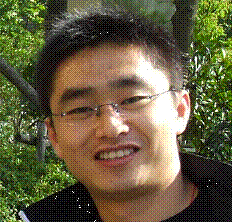 |
Dr. Zhe Yuan
University of Twente, the Netherlands |
Abstract: A magnet can point up or down in a magnetic field. In magnetic materials, information is stored digitally by using two such "states" to represent ones and zeros. A proposal to store information in high-density "racetrack" memories has focused attention on how electric currents in a magnetic material are affected by twisting of the magnetism (so-called a "domain wall") in between regions ("domains") where the magnetism is either all "up" or all "down". However, disordered itinerant ferromagnetic alloys are not readily amenable to theoretical investigation because of their complexity. The study of disordered magnetic domain walls is more difficult still because the magnetization direction changes gradually over long length scales, of the order of 100-1000 nm. In a recent work, we investigate diffusive transport through a number of domain wall profiles of the important magnetic alloy Ni80Fe20, Permalloy, taking into account simultaneously non-collinear magnetism, alloy disorder, and spin-orbit coupling fully quantum mechanically, from first principles. In addition to observing the known effects of magnetization mistracking and anisotropic magnetoresistance, we discover a new contribution to the resistance of a domain wall that comes from spin-orbit-coupling mediated spin-flip scattering in a textured diffusive ferromagnet. Our analysis of the numerical results indicates the finding is generally applicable to other magnetic materials where the effect might be significantly enhanced by using heavier element with larger values of the spin-orbit coupling. This work also has implications for understanding spin-transfer torque in magnetic domain walls.
About the Speaker: Dr. Zhe Yuan received his B.Sc. and M.Sc. degrees in physics from Tsinghua University and his Ph.D. degree from Chalmers University of Technology, Sweden. He is currently a postdoctoral fellow in University of Twente, The Netherlands. His research interests include electronic structure calculation and its applications in spin transport, spin torque, and magnetization dynamics. He is also interested in electronic excitations in bulks, surfaces and nanostructures.
Date&Time: January 11, 2013 (Friday), 10:30–11:30 a.m.
Location: 606 Conference Room


